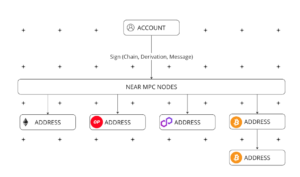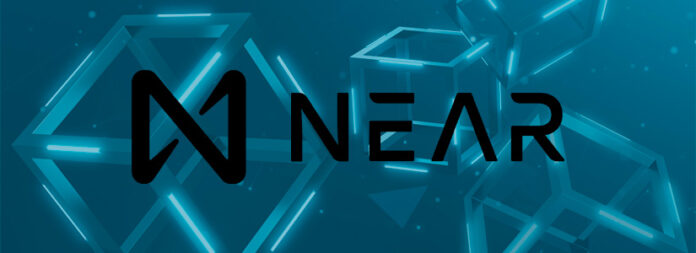Proximity Foundation, which supports the Layer 1 Proximity Protocol, announced that it now supports signatures. This advancement provides users with access to multiple channels using their Proximity accounts, increasing engagement and user experience.
Thanks to a recent partnership with EigenLayer, a blockchain project built on Ethereum,
chain signatures and multi-transactions have become possible.
EigenLayer’s expertise and collaboration have contributed to the security and performance of the blockchain, further strengthening the protocol’s ecosystem and capabilities.
Changing cross-chain transactions for the Chain Signatures NEAR Protocol
Near Foundation announced its collaboration with light chain protocol Eigenlayer. This new technology allows ACCOUNTS to use smart contracts to sign products at any stage, modifying interactions between chains and opening up a number of use cases for general users and Web3 developers.

Powered by a decentralized Multiparty Computing (MPC) network, it uses chain signatures, NEAR staking, and EigenLayer ETH reservers for strong security. Currently, the protocol supports major blockchains such as Ethereum, Cosmos chains, DogeCoin, and XRP Ledger, and there are plans to integrate with Solana, TON Network, Polkadot, and more in the future.
An important feature of the chain signature is that the signature is added to each chain controlled by the NEAR account and smart contract. This method allows WORKING ACCOUNTS, which can also act as smart contracts, to require a payload signature like other methods. This decentralized MPC network allows users to have full control over performance while eliminating the hassle of managing multiple addresses.
In addition to Chain Signatures, Near adds a ‘Multi-Chain Gas Transmitter’ to its ecosystem, eliminating the need to trade natural gas on another chain. This development allows users to use NEXT tokens (NEP-141) to pay for gas simply and conveniently at any level, in many environments.
Developments along the lines of NEAR are a continuation of the chain abstraction initiative that aims to simplify the user experience in crypto by solving many transaction-related issues.
Chain signatures and Multi-Chain blockchain allow users to exchange contracts for smart contracts and a set of smart contracts using a single account or over the Internet.
Nearly Foundation cuts headcount by 40% despite strong performance
As DappRadar reported on January 11, the Near Protocol saw an impressive 1,902% increase in the number of unique wallets working with Web3 applications. This increase represents a significant increase in user activity around the ecosystem.
However, despite its good performance and strong funding, the Near Foundation made the sudden decision to reduce its workforce by 40%. This development seems surprising, especially considering that the ecosystem has been so active this year.
Despite this workforce reduction, Nearest Protocol continues to maintain a great Web3 ranking, with three of its implementations in the Web3 top 10. Moreover, the ecosystem has an increasing number of users every day, which indicates continuous growth and the use of the latest technologies and applications.
